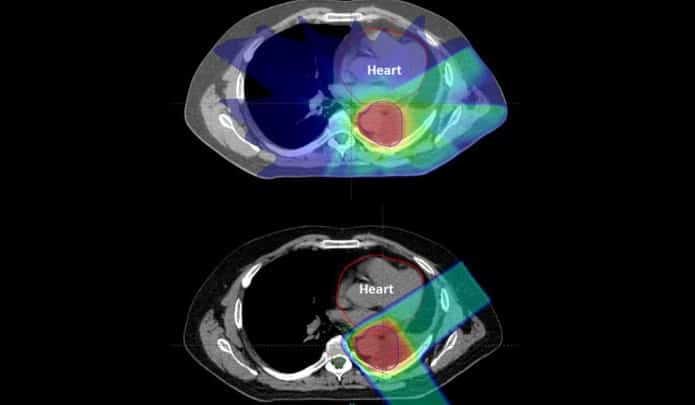
A new study was just released showing that, across a variety of cancers, proton therapy results in dramatically less severe side effects for patients.
Results from the Study
Simply stated this study shows that if doctors recommend radiation and chemotherapy together to treat your cancer, you can cut your risk of severe side effects from the treatment that result in ER visits or hospitalizations from 28% to 12% if you replace traditional “targeted” IMRT / 3D type x-ray radiation with Proton Therapy.
This is really an amazing study due to the potential impact. A very large number of cancers are treated with a combination of chemotherapy and radiation therapy at the same time (overlapping on a calendar) – it is called concurrent treatment. This study looked at nearly 1500 patients who were treated with concurrent chemotherapy and radiation. It’s published out of the University of Washington, but the patients and data come from the University of Pennsylvania. Basically you had an institution that has both the very best IMRT and Proton Therapy on the same campus. This simple study looked at outcomes for the patients to see if there was a difference in outcomes between IMRT and Proton Therapy.
A FEW VERY IMPORTANT POINTS:
- This is a major institution.
- The physicians doing the plans are very well qualified.
- The center itself is a top 10 us news and world report center (so the IMRT is a high quality IMRT).
It is NOT randomized – so that means that there was not a coin flip. A coin flip is closer to ideal. This was patient factor based and insurance approval based. Generally, proton centers get the hardest cases so if anything that should benefit IMRT. Secondly, Medicare gives far better coverage for proton therapy than most private payers so there was a 5 year age difference in the proton therapy group. Those two factors favor IMRT. Patient factors might very well favor proton therapy. The argument would be that people in better health or better educated or those with better family support are able to get proton therapy more often so they are selected – that would be the argument – it doesn’t really hold up in the Medicare patients at a single institution in my mind, but that might be the argument.
But the age difference is clear, 66 years old in the proton therapy group and 61 years old in the IMRT. So I’d guess this was set up to favor IMRT based on that single factor.
What the study showed was a significant difference across a variety of tumor types and locations in favor of proton therapy. Patients tolerated the radiation far better if it was delivered with proton therapy. Grade 3 side effects fell by a factor of 2/3rds. Those side effects result in hospitalizations or ER trips. Survival was similar with no obvious difference between the two treatment approaches.
Of course a larger home run would have been to show less side effects and much longer survival. It did not show that, but reducing side effects is critical. Reducing side effects lets us reduce costs and improve quality of life during cancer treatment. And long term, better tolerance of treatment will lead to longer survival. (that is a personal belief – but everything I’ve seen in my career and in looking at data says it will eventually show up in data – it just takes longer and more patients). With less side effects, you can deliver more treatment. You can be one step more aggressive and have less treatment breaks. It will lead to better outcomes.
Here are some links where you can read more on this very important trial:
New study handout from the Oklahoma Proton Center.
Link to the original press release from Washington University.
Dr. Mark Storey MD
OKCProton.com
